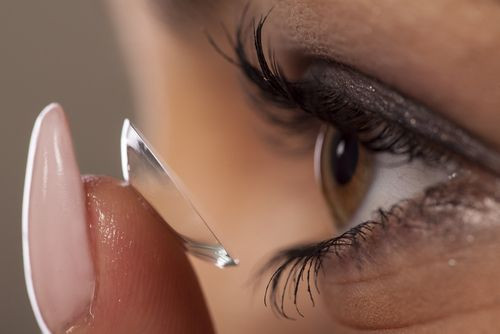Contact Lenses Are A Breeding Ground For Parasites; One Student Went Blind After Wearing Them For 6 Months Straight

The cardinal rule when using contact lenses is to maintain proper hygiene. That means cleaning them regularly and disposing of them when recommended. Not doing so can leave the wearer susceptible to infections, which are the smallest of problems to be worried about, considering that 23-year-old Taiwanese student, Lian Kao, became infected by a bug that gnaws the eyeballs after keeping her lenses on for six months straight.
The microscopic bug that ate up Kao's cornea was the single-celled amoeba Acanthamoeba, which is notorious for the severe infections it causes in the eye, skin, and central nervous system. The parasite is commonly found in soil, dust, showers, and even swimming pools. When it makes contact with unclean lenses, it starts feeding on the bacteria on them, and if they happen to be on someone's eyes, the parasite burrows down to where it can start feeding on the cornea — a condition called Acanthamoebic keratitis.
Infections of this type are rare. They are hard to detect until the the person with the amoeba in their eye begins to experience acute pain. Early stages of infection may be cured with prescription drugs, but diagnosis is often complicated, delayed, and generally unsuccessful. The Journal of Optometry defines Acanthamoeba keratitis as a blinding complication that results due to wearing a lens past its time. Kao had worn the same lenses for six months, even while swimming, without once cleaning or removing them. This gross negligence cost her an eye.
According to the Daily Mail, the amoeba had eaten up the surface of Kao’s eyes, breeding in the space between her eye and the lens. The director of ophthalmology at Taipei's Wan Fang Hospital, Wu Jian-Liang said, “Contact lens wearers are a high-risk group that can easily be exposed to eye diseases. A shortage of oxygen can destroy the surface of the epithelial tissue, creating tiny wounds into which the bacteria can easily infect, spreading to the rest of the eye and providing a perfect breeding ground. The girl should have thrown the contact lenses away after a month, but instead, she overused them and has now permanently damaged her corneas.”
The doctors are now using Kao’s story to educate the 34 million Americans and 71 million people worldwide who use contacts. Acanthamoeba is responsible for 95 percent of reported cases of keratitis and doctors urge contacts wearers to exercise preventive measures. Personal hygiene with contact lenses includes cleaning them with commercially available cleaning solutions, avoiding water while cleaning, not swimming, showering, or using a hot tub while wearing contacts, and using one’s own without sharing.



























